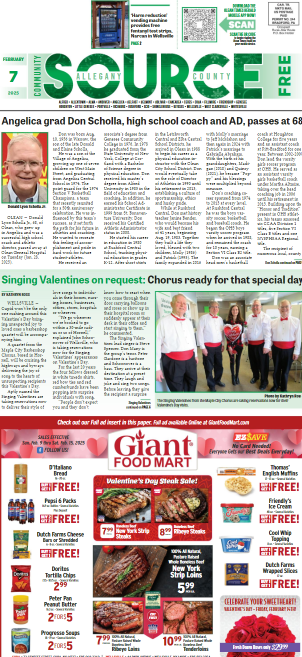Henry Zomerfeld (right), an attorney representing applicant Donald Benson before the town of Allegany Zoning Board of Appeals, describes area variances sought for a gravel pit on South Nine Mile Road during a public hearing Tuesday.
Bob Clark/Olean Times Herald
Business, Local News, News
Gravel pit setbacks draw dozens to Allegany public hearing
ALLEGANY — Zoning officials will reserve judgement on variances for a new gravel pit until next mo...







